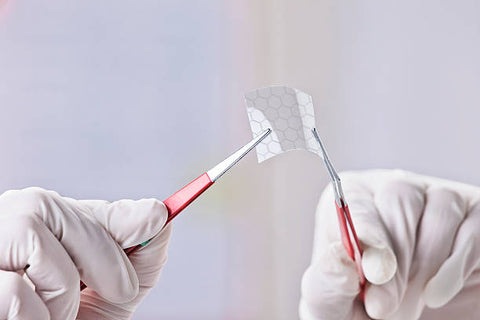Graphene Basics

Graphene is a single layer of carbon atoms, arranged in a hexagonal lattice. Graphene has a multitude of unique properties. It is the thinnest and strongest material currently known to man. Graphene also has high thermal and electrical conductivity. Graphene is very flexible and can be bent and stretched without breaking. It also has unique light absorption, which creates a glare free, see through material.

The structure of graphene consists of an allotrope of carbon in a 2D form. The carbon atoms are in a hexagonal design and form a single sheet. Each carbon atom is covalently bonded to three other carbon atoms. These covalent bonds are extremely strong, giving graphene its strength and stability.
Graphene is a versatile material, with hundreds of application opportunities. Researchers continue to explore the vast range of possibilities for graphene. A list of some of the known applications includes lithium ion batteries, concrete, lubricants, supercapacitors, filtration systems, inks, coatings and composites.
